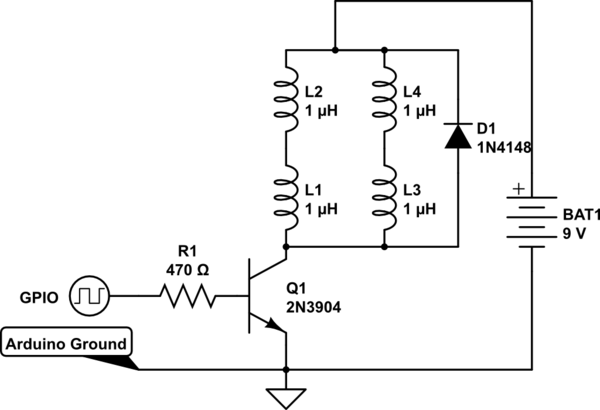Okay so I haven't had any luck finding an answer on here that I was able to understand (I'm in a BioE program, just dabbling on the electrical side for a project). Overall its a pretty simple circuit I am making.
Here's what I am trying to accomplish:
Use Arduino code as a switch to control the on/off power of 4 vibrating motors, which will be wired in parallel (specs: https://www.adafruit.com/product/1201)
Motors are powered by an external 9V battery
- I want to have around 4.5V across the vibrating motors, which I got with a 50 Ohm resistor in series with the 4 motors in parallel
- Current draw by each motor at 4.5V will be ~90 mA
Here's what I think might work:
Need to use a transistor between the 9V (collector) and the (50 Ohm resistor + motors) (emitter)
I would use the Arduino Uno digital output Pin 3 (PWM output) and connect it to the "base" of the transistor
Question:
First off, do I have the right idea here?
Lastly, I have never worked with transistors before, how do I figure out which transistor will be correct for this application? i.e. what calculations do I need to make?
Thanks!

